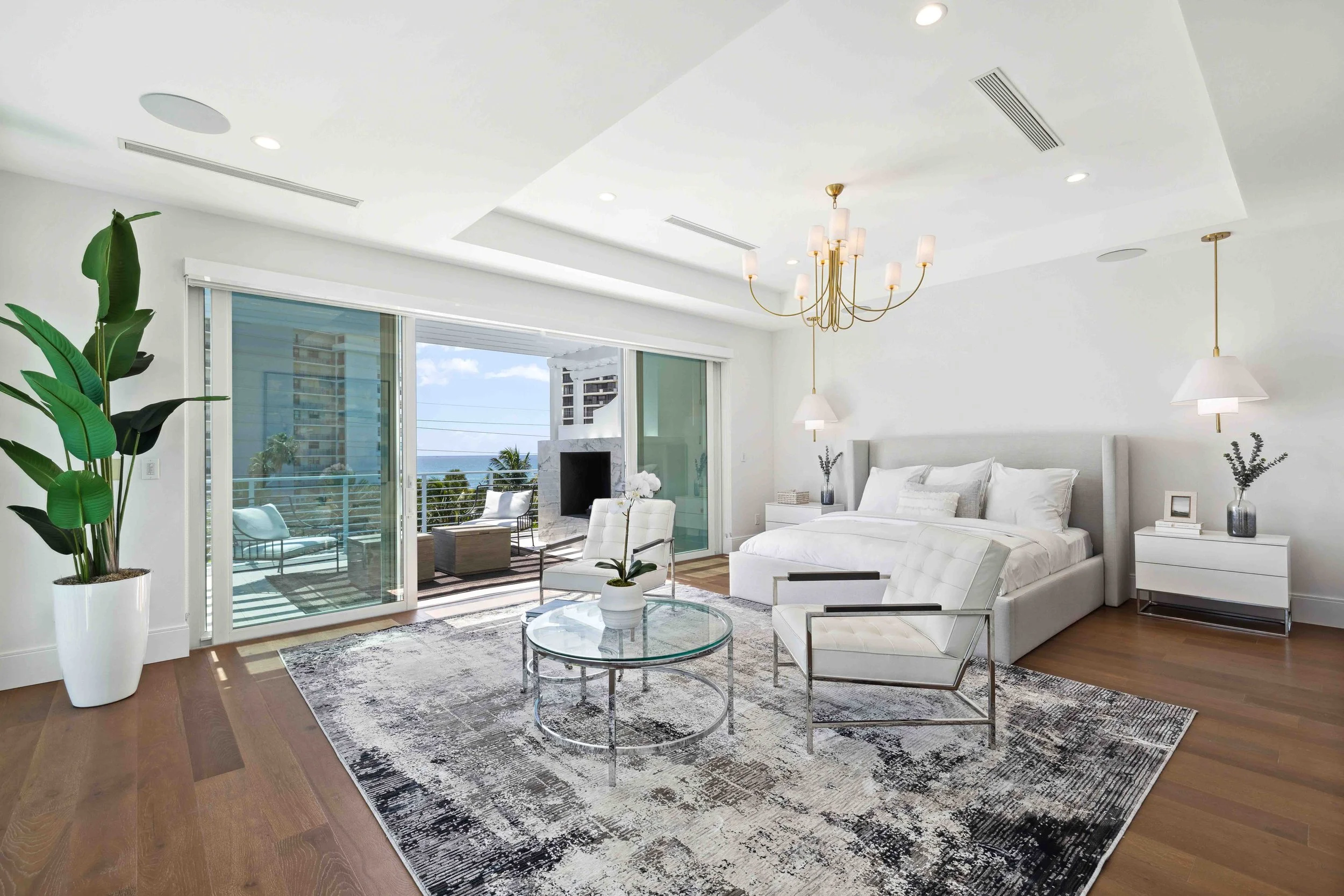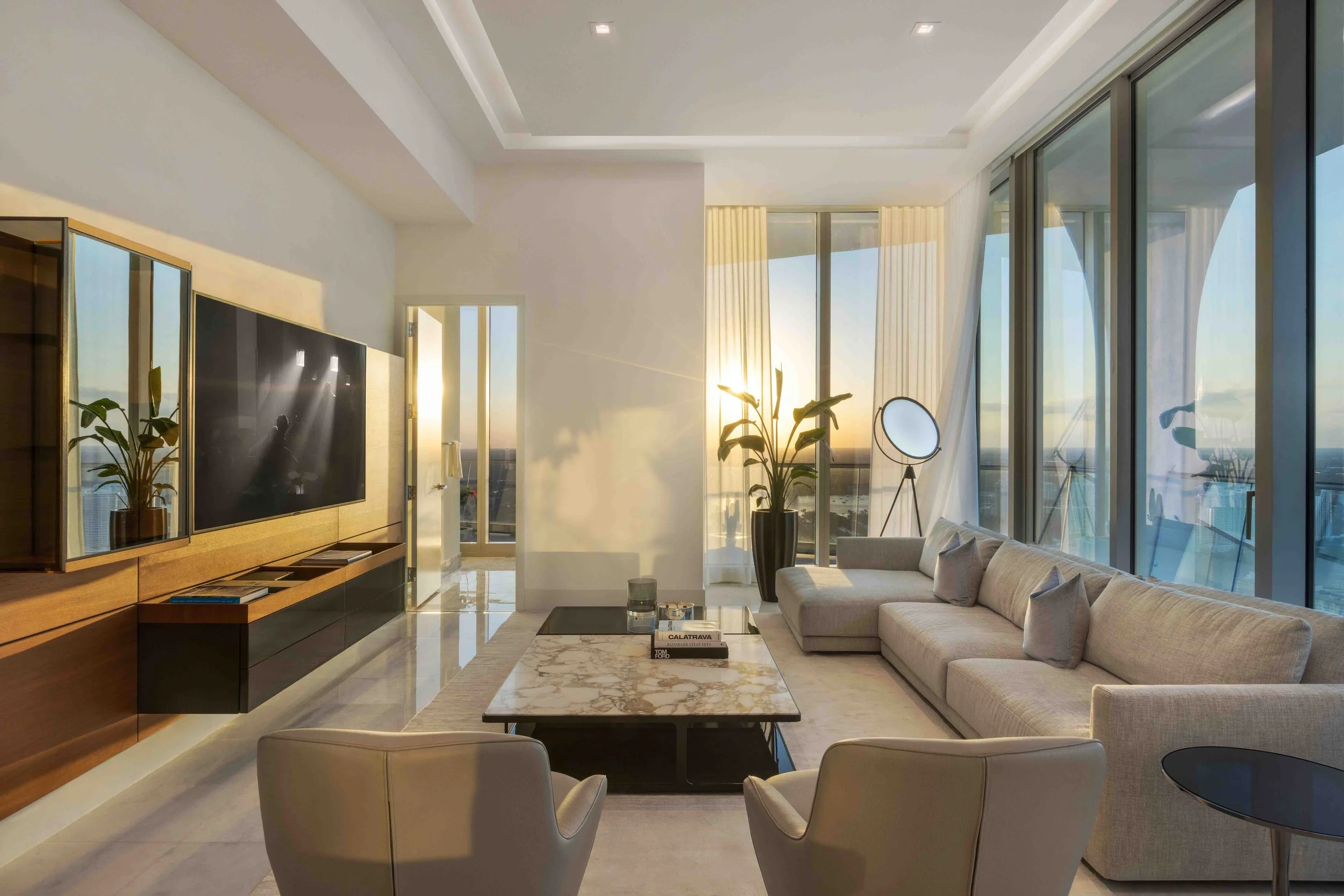Rep vs A&D Photography: Key Differences and Pro Tips for Beginners
As a luxury real estate photographer specializing in South Florida's dynamic market—I've had the opportunity to work across both real estate photography (REP) and architectural & design photography (A&D).
While they share a common foundation in capturing spaces, the nuances between them can significantly impact your approach, from client expectations to technical execution.
For photographers looking to expand their skills or refine their niche, understanding these differences is invaluable—not only as a learning exercise but also for optimizing your portfolio and business in a competitive market.
//TM©
//TM©
The Core Purpose: Selling vs. Celebrating Design
Real Estate Photography (REP): This is primarily about facilitating sales or rentals. The focus is on making the property appear welcoming and functional, emphasizing features that appeal to potential buyers, such as open layouts and key amenities. Images are designed to be neutral and broad-appealing, with a short shelf life tied to the listing cycle.
Architectural & Design Photography (A&D): Here, the emphasis is on artistry and narrative, showcasing the architect's or designer's vision for portfolios, publications, or marketing materials. These photos highlight textures, forms, and emotional resonance, often serving as enduring assets for branding.
Pro Tip for Photographers: Align your services with client goals—stress quick delivery for REP agents, while offering collaborative mood boards for A&D projects. This strategy has helped me secure repeat business in South Florida's luxury sector.
Shooting Techniques: Efficiency vs. Deliberate Composition
REP prioritizes speed to accommodate tight schedules, whereas A&D allows for a more thoughtful, extended process.
REP: Use wide-angle lenses (e.g., 16-35mm) for room-filling shots that maximize perceived space. Sessions typically last 1-2 hours, producing 15-25 images with straightforward lighting to create bright, inviting results.
A&D: Employ a range of lenses, including tilt-shift for precise perspectives, with shoots spanning hours or days. Lighting is meticulously controlled to evoke mood, often involving multiple setups for dramatic effects.
Pro Tip: Build versatility by practicing A&D techniques on REP off-days—experiment with controlled shadows to add depth, enhancing your overall toolkit.
Gear and Post-Production: Practical vs. Sophisticated
REP: Rely on reliable setups like DSLRs with wide lenses. Editing is efficient, focusing on sky replacements, natural bright whites and other minimal tweaks.
A&D: Incorporate specialized tools such as advanced strobes and proffesional lenses. Post-production is more involved, using Photoshop for intricate blending and retouching to achieve artistic perfection.
In real estate photography (REP), shoots typically take 1-2 hours on site, producing 25-50 images with a heavy reliance on wide-angle lenses to emphasize space and functionality for agents focused on quick sales.
Editing is minimal, involving basic corrections to maintain efficiency and ethical standards. In contrast, architectural and design photography (A&D) often extends over hours and sometimes spanning over multiple days, yielding a more focused set of images using a mix of lenses—including wide, telephoto, and tilt-shift options—to capture intricate details and perspectives. Post-production is extensive, featuring compositing and detailed retouching to create artistic, portfolio-worthy results tailored for architects and designers.
Pro Tip: For A&D, a tilt-shift lens like the Laowa 20mm f/4 Zero-D Shift is essential for distortion-free lines—it's transformed my workflow.
Client Expectations and Pricing: Volume vs. Value
REP: Clients like realtors seek affordable packages ($200-600) with rapid turnaround, prioritizing practicality over creativity.
A&D: Architects and designers invest in premium services ($2K+), expecting in-depth involvement and images that elevate their professional image.
Pro Tip: If bridging the two, network with South Florida builders for entry-level A&D work—start with discounted sessions to build a diverse portfolio.
Learning Exercise: Bridging the Styles in Practice
To sharpen your skills, photograph a single property in both styles: REP for quick, buyer-focused shots and A&D for artistic interpretations. Analyze the results to see how techniques overlap and diverge.
Pro Tip: Remember ethics—REP prohibits removing real elements (e.g., neighboring structures) to prevent misleading buyers, while A&D offers more leeway for non-sales uses.
Final Thoughts: Expand Your Expertise for Greater Opportunities
Grasping the distinctions between REP and A&D not only refines your craft but also opens doors to varied clients. In South Florida's thriving luxury market, blending these approaches has allowed me to deliver standout results across projects.
Which style resonates more with you, or how have you navigated the switch? Share in the comments—I'd love to hear your experiences. Explore my portfolio or subscribe to my newsletter for more.



